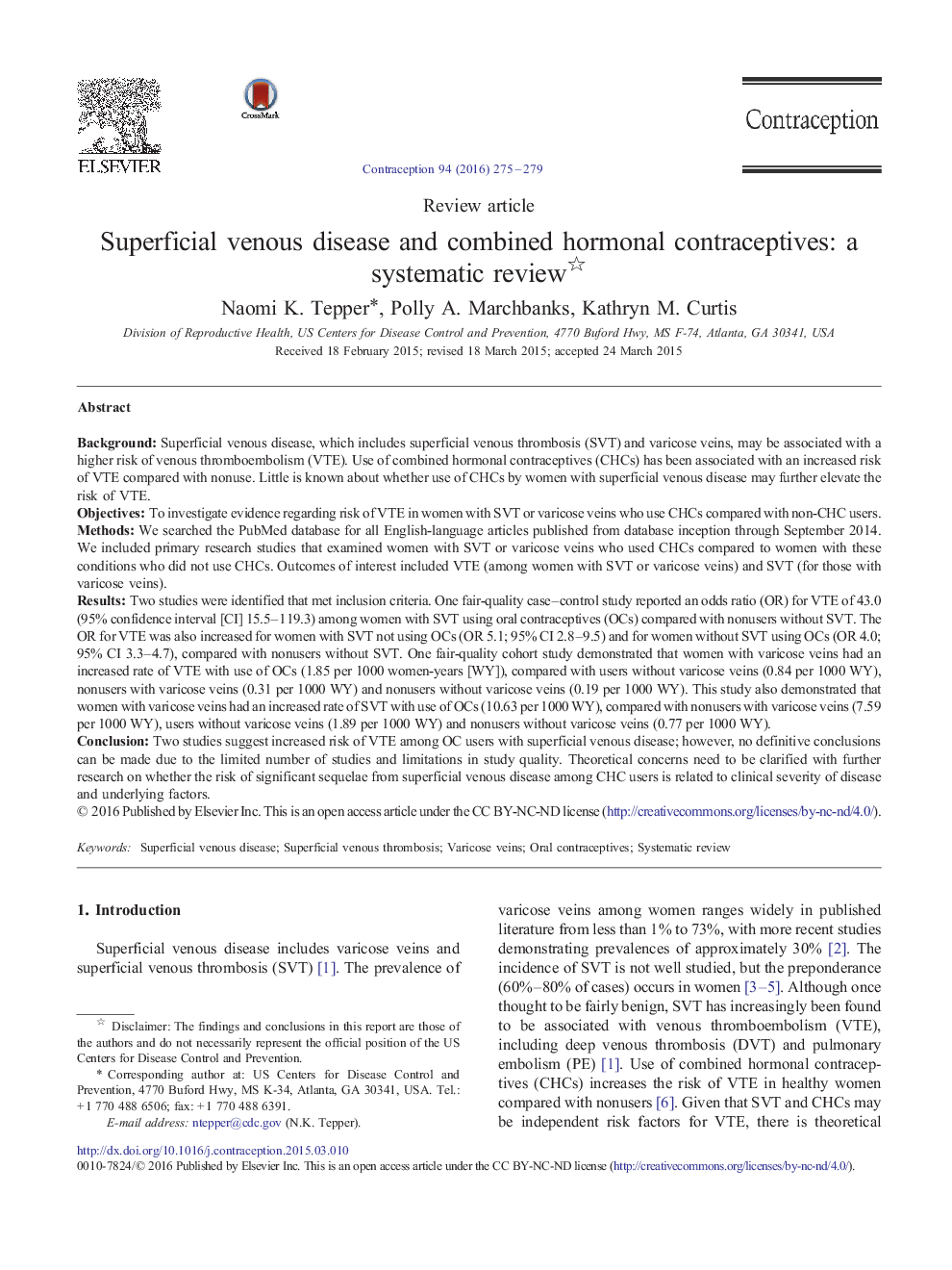| Article ID | Journal | Published Year | Pages | File Type |
|---|---|---|---|---|
| 6170636 | Contraception | 2016 | 5 Pages |
BackgroundSuperficial venous disease, which includes superficial venous thrombosis (SVT) and varicose veins, may be associated with a higher risk of venous thromboembolism (VTE). Use of combined hormonal contraceptives (CHCs) has been associated with an increased risk of VTE compared with nonuse. Little is known about whether use of CHCs by women with superficial venous disease may further elevate the risk of VTE.ObjectivesTo investigate evidence regarding risk of VTE in women with SVT or varicose veins who use CHCs compared with non-CHC users.MethodsWe searched the PubMed database for all English-language articles published from database inception through September 2014. We included primary research studies that examined women with SVT or varicose veins who used CHCs compared to women with these conditions who did not use CHCs. Outcomes of interest included VTE (among women with SVT or varicose veins) and SVT (for those with varicose veins).ResultsTwo studies were identified that met inclusion criteria. One fair-quality case-control study reported an odds ratio (OR) for VTE of 43.0 (95% confidence interval [CI] 15.5-119.3) among women with SVT using oral contraceptives (OCs) compared with nonusers without SVT. The OR for VTE was also increased for women with SVT not using OCs (OR 5.1; 95% CI 2.8-9.5) and for women without SVT using OCs (OR 4.0; 95% CI 3.3-4.7), compared with nonusers without SVT. One fair-quality cohort study demonstrated that women with varicose veins had an increased rate of VTE with use of OCs (1.85 per 1000 women-years [WY]), compared with users without varicose veins (0.84 per 1000 WY), nonusers with varicose veins (0.31 per 1000 WY) and nonusers without varicose veins (0.19 per 1000 WY). This study also demonstrated that women with varicose veins had an increased rate of SVT with use of OCs (10.63 per 1000 WY), compared with nonusers with varicose veins (7.59 per 1000 WY), users without varicose veins (1.89 per 1000 WY) and nonusers without varicose veins (0.77 per 1000 WY).ConclusionTwo studies suggest increased risk of VTE among OC users with superficial venous disease; however, no definitive conclusions can be made due to the limited number of studies and limitations in study quality. Theoretical concerns need to be clarified with further research on whether the risk of significant sequelae from superficial venous disease among CHC users is related to clinical severity of disease and underlying factors.
